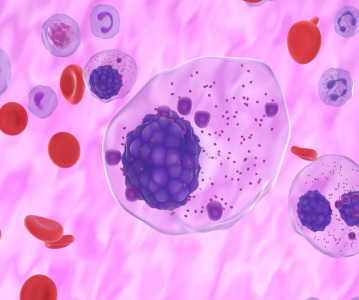First Drug Candidate from NIH Programme Acquired by Biopharmaceutical Company

A drug candidate developed by researchers at the NIH’s National Center for Advancing Translational Sciences (NCATS) and its collaborators to treat sickle cell disease has been acquired by Baxter International’s BioScience business. The drug candidate, Aes-103, is the first specifically developed to target the underlying molecular mechanism of sickle cell disease. Baxter now will advance the clinical development activities required for regulatory approval and commercialisation.
This is the first time a company has acquired a drug candidate developed with NCATS’ Therapeutics for Rare and Neglected Diseases (TRND) programme resources. Baxter International recently acquired AesRx, LLC, Newton, Massachusetts — the TRND programme collaborator — including Aes-103. TRND and AesRx researchers worked together to develop Aes-103 through a Phase II clinical trial to evaluate safety and effectiveness. The trial data indicated that Aes-103 significantly reduced patients’ pain.
“This is a wonderful example of why NCATS was created,” said NIH Director Francis S. Collins, MD, PhD. “The progress made thus far in the development of Aes-103 demonstrates NCATS’ catalytic role in bringing together the necessary players, whether academic, nonprofit or industry, to overcome obstacles to translation and advance badly needed treatments to patients.”
Currently, the only drug approved by the FDA to treat sickle cell disease is hydroxyurea, a drug initially developed to treat cancer. However, the clinical utility of hydroxyurea is limited. Many individuals with sickle cell disease either do not respond to the drug, or they may experience undesirable side-effects.
“Sickle cell was the first disease to ever have its molecular cause discovered — more than 65 years ago — and now a potential treatment based on that discovery has at last been developed,” said NCATS Director Christopher P. Austin, MD. “This success validates the NCATS model, which is based on a novel collaborative approach that de-risks intervention development programs to enable private-sector investment. We look forward to applying this model to the thousands of rare diseases that are currently untreatable so that we realize the NCATS mission of getting more treatments to more patients more quickly.”
To read more, click here.
Related News
-
News BioNTech to begin mRNA vaccine manufacturing in Rwanda by 2025
German biotechnology company BioNTech has stated their intentions to begin production at their mRNA vaccine factory in Rwanda by 2025, which will mark the first foreign mRNA vaccine manufacturing site on the continent of Africa. -
News Identifying Alzheimer’s Disease biomarker proteins with whole blood tests
A University of Manchester spin-out pharmaceutical company, PharmaKure, has reported successful study results for the quantification of Alzheimer’s Disease biomarker proteins with a whole blood test. -
News Bill & Melinda Gates Foundation to boost mRNA vaccine initiatives in Africa with USD $40m
To address vaccine inequality and accessibility issues, the Bill & Melinda Gates Foundation aims to deliver USD $40m to various biotech companies and vaccine manufacturers in support of mRNA vaccine development. -
News CPHI Podcast Series: Exploring neurological frontiers in Alzheimer's and beyond
The next episode of the CPHI Podcast Series delves into the science and background behind some recent developments in the field of Alzheimer's disease and neurological disorders. -
News Is patient centricity the future of pharmaceutical manufacturing?
In this interview with Sandra Sánchez y Oldenhage, President of PharmAdvice, she speaks to the importance of considering patients in the manufacturing stages of the pharmaceutical supply chain, and how it can redefine healthcare. -
News CPHI Podcast Series: How to leverage AI for Drug Discovery
Artificial intelligence is the topic of debate in the latest episode from the CPHI Podcast Series, where Digital Editor Lucy Chard speaks with Bill Whitford of DPS Group about the integration of AI in healthcare. -
News Pfizer forges ahead with blood cancer therapy after approval from FDA
Pfizer gains accelerated approval from the US FDA for their new bispecific antibody therapy for multiple myeloma, set to address an unmet need for patients. -
News Alzheimer's drug donanemab deemed effective in landmark clinical trial
Results from the TRAILBLAZER-ALZ 2 Randomised Clinical Trial into the use of donanemab to treat early symptoms of Alzheimer’s disease have been analysed.
Position your company at the heart of the global Pharma industry with a CPHI Online membership
-
Your products and solutions visible to thousands of visitors within the largest Pharma marketplace
-
Generate high-quality, engaged leads for your business, all year round
-
Promote your business as the industry’s thought-leader by hosting your reports, brochures and videos within your profile
-
Your company’s profile boosted at all participating CPHI events
-
An easy-to-use platform with a detailed dashboard showing your leads and performance







